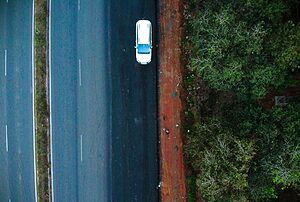In brief
- Minister Judith Collins blamed World War II and the Korean War for NIWA’s failure to include historic flood data before Cyclone Gabrielle.
- Cyclone Gabrielle’s flooding, which killed 11 people, was underestimated because NIWA missed significant floods from 1941 and 1953 in its calculations.
- Collins’ remarks have drawn criticism, especially since NIWA was only established in 1991, raising doubts about her explanations.
For previous coverage of this story, read here and here.
Minister thinks this is ‘rabbit-hole stuff’
One of the government’s most senior ministers has tried to blame Adolf Hitler and the North Koreans for NIWA’s failure to provide accurate flood risk analysis ahead of Cyclone Gabrielle last year.
Science and Innovation Minister Judith Collins also appears to have given yet another false statement, more on that shortly.
But first, the bizarre claim that WW2 caused NIWA’s woes emerged in an extraordinary interview between Science and Innovation Minister Judith Collins and RealityCheck Radio’s Paul Brennan this week, in which Collins had pre-warned “this is going down a rabbit-hole stuff”.
Judith Collins spoke with Paul about whether NIWA misled her over missing historical storm data. 💣
— REALITY CHECK RADIO (@RCR_NZ) August 13, 2024
"This is going down a rabbit hole stuff, honestly, Paul"…
Eleven people died.
📲 SHARE this clip!https://t.co/uqtuFI4a2D 🚀 pic.twitter.com/vl0ESFHAy3
As previously reported by Centrist, an official inquiry into Gabrielle flooding in Hawke’s Bay found that failures by NIWA and the regional council to include big historic floods in their risk calculations led to a serious underestimation of danger, and no credible evacuation plan. Eleven people died, including a toddler.
The Gabrielle Review had noted that NIWA was categorising Gabrielle as a 1-in-1000 yr flood, but that if huge missing floods like 1941 and 1953 had been included in planning Gabrielle drops to a 1-in-50yr event.
“When it comes to lives lost,” Paul Brennan quizzed Collins, who has responsibility for NIWA, “and you’ve got missing flood data – for example ’41 and ’53 that they didn’t have in their database…maybe if they did have it in there they could have given a better warning?”
Minister caught out flat footed
Collins asked what ’41 and ’53 were, which implies she had not read the Gabrielle Flood Review, and then after Brennan explained they were missing historical records, Collins kept her “rabbit hole” promise and linked the missing records problem to Hitler:
“1941? I mean, frankly we were at war…1953, can’t tell you what was happening there, I think we were at war, the Korean war, we were there.”
“What’s it got to do with the war?” asked Brennan in disbelief.
“I’m not sure,” said Collins. “I don’t know quite what the reason is but I do know that that was, maybe wasn’t something that NIWA had at the time.”
🔎 Who Has The Facts – The Minister Or The Journalist?! 🔎
— REALITY CHECK RADIO (@RCR_NZ) August 14, 2024
Investigative journalist Ian Wishart @investigatemag joined Paul Brennan on Breakfast this morning to address statements made by Minister Judith Collins on RCR yesterday regarding NIWA's missing historical storm data and… pic.twitter.com/Krty4kHpa6
Seeing as NIWA didn’t exist until 1991 it clearly wasn’t distracted by fighting Hitler in 1941, and the 1941 and 1953 flood records clearly existed because the Gabrielle Flood Review found them even though NIWA couldn’t.
Admitting that NIWA didn’t have the historical records was proof that the minister’s assurance that no records were lost was untrue, but the Minister (who is also Attorney-General) didn’t seem to realise she had contradicted herself:
“So you are confident that everything you hear from NIWA is OK?” probed Brennan.
“Well, at the moment, I need to see otherwise. And the fact of being in a newspaper doesn’t necessarily mean that NIWA had it at that time,” Collins retorted.
Again, given that NIWA didn’t exist in 1941 it couldn’t possibly have “had it at that time”, which is exactly why NIWA needs to be collecting data from historical sources to fill in its gaps.
As it stands, NIWA’s minister seems to be arguing that if NIWA doesn’t have a record then it didn’t officially happen. It’s not a credible argument. People died in Hawke’s Bay’s historic floods.
The Minister’s unwillingness to read the evidence and make NIWA accountable for misleading her has left political observers scratching their heads. The issue and the radio interview are doing damage and if it drags on Prime Minister Chris Luxon may decide to cut his political losses.
Facts are facts: NIWA data is incomplete
At the end of the day, systemic failures mean NIWA has not been including many big historic floods in their risk analysis. Those failures may already have killed people and may kill more if the issue isn’t resolved. Surely it’s not too much to ask for NIWA to have one comprehensive database that includes all the megastorms recorded since 1840 so that next time a big storm comes over the horizon NIWA can quickly pull up data on previous disasters and give more accurate information to councils, civil defence and the public.
Image: Facebook



















